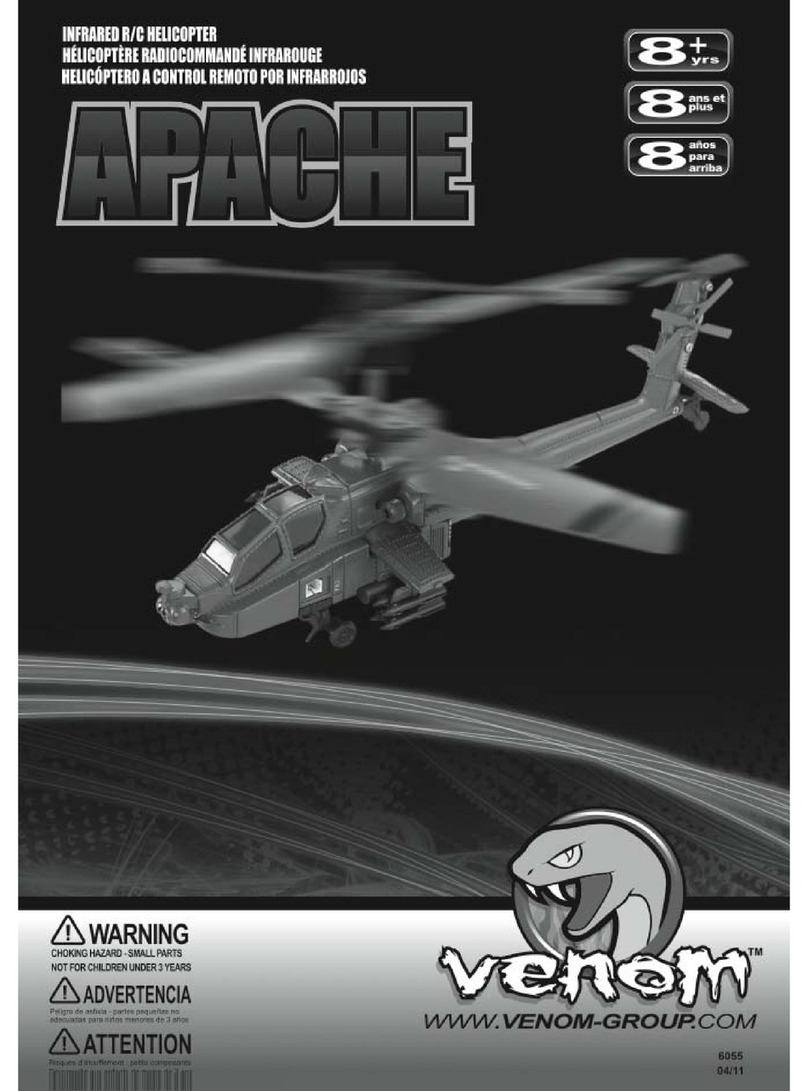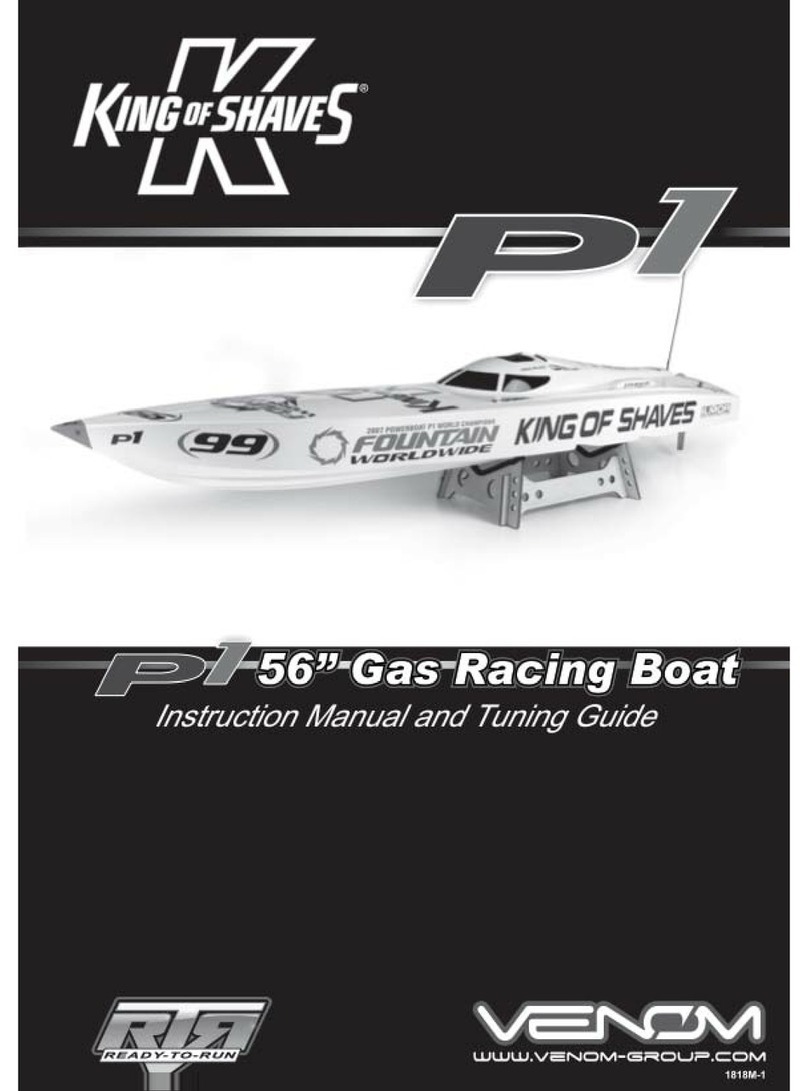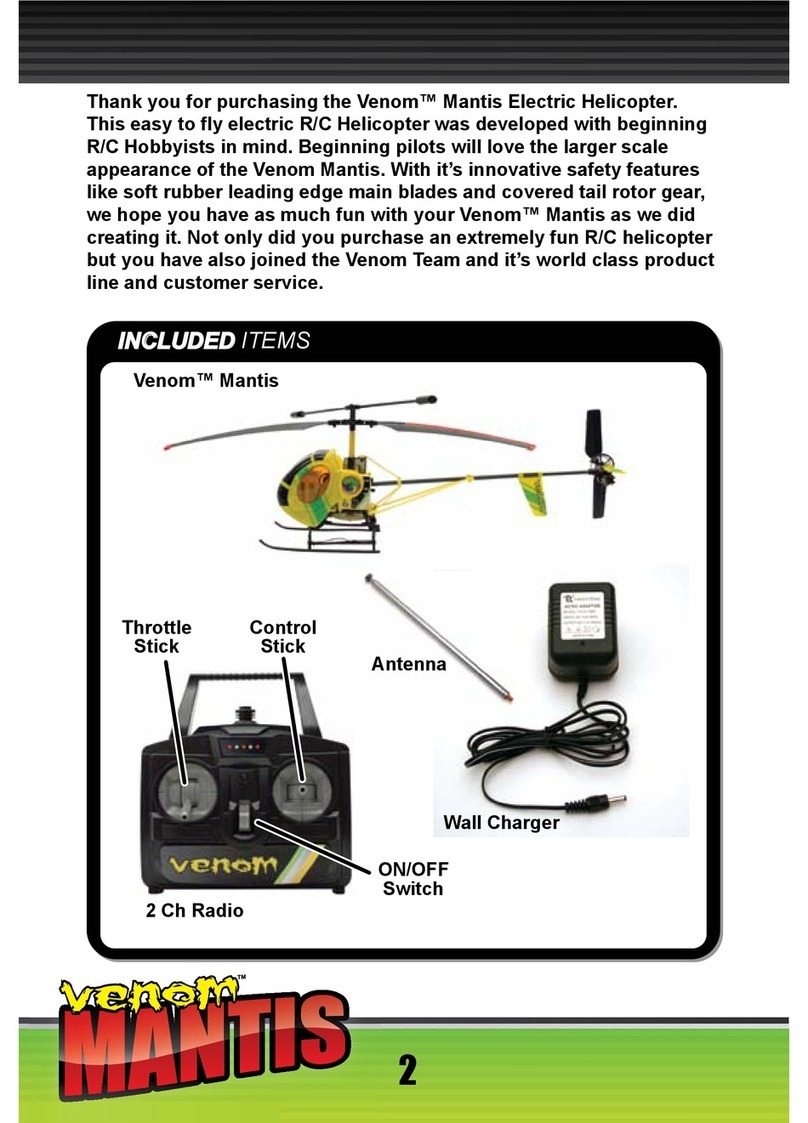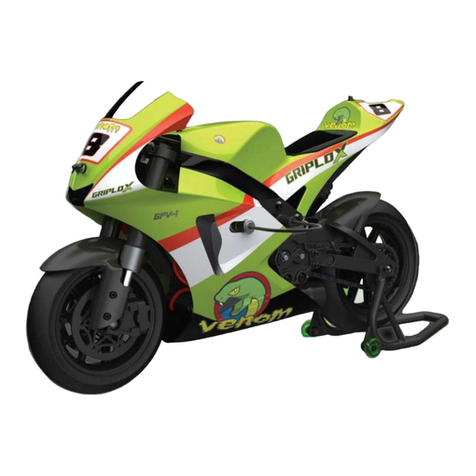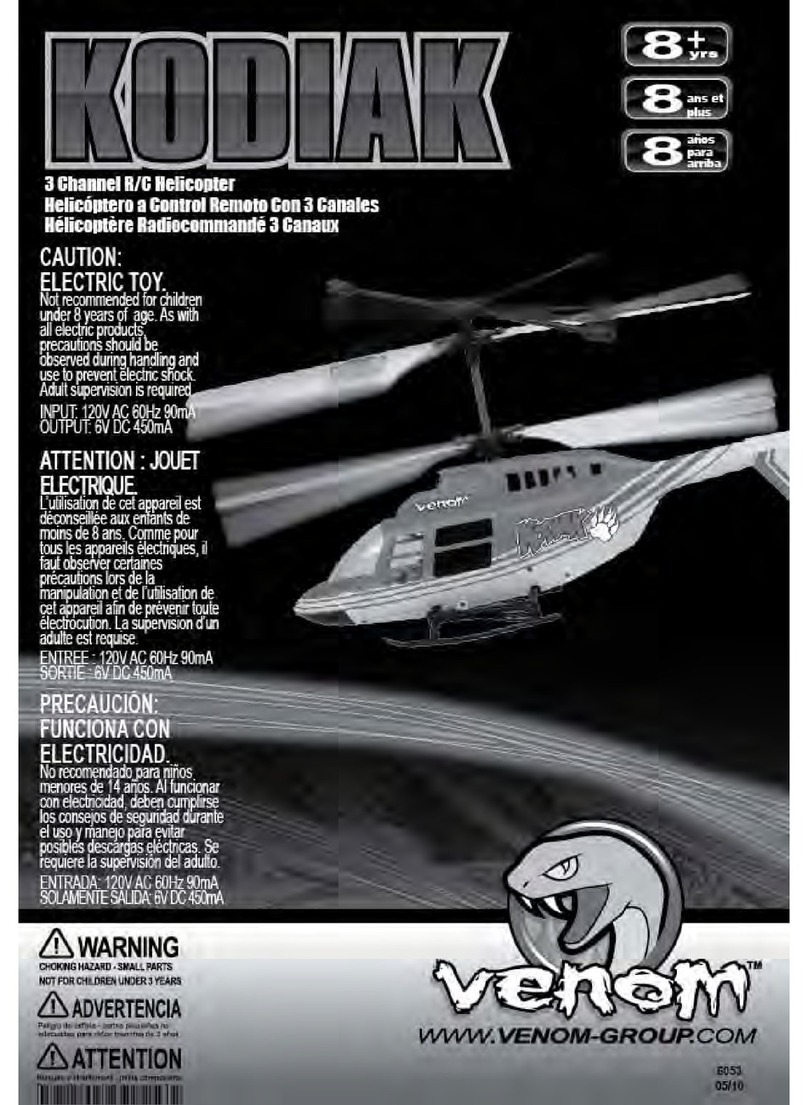
3. Plug in the supplied the wall charger and attach the battery pack.
Caution: The battery will be fully charged in about 2 hours, do not
overcharge! Overcharging the battery will cause serious damage or
may explode the battery! If batteries get hot during charging,
discontinue charging immediately and disconnect the battery from the
charger. Never leave battery unattended while charging. If you are
unsure of how to charge this battery, please contact Venom Air Corps
or seek the advice of your local hobby shop. Never let children charge
batteries without adult supervision.
4. Slide the battery holder apart, insert the fully charged battery (with the
wire lead facing forward) into the front half of the battery holder. Slide
the rear half of the holder back over the battery and secure with a
rubber band. Slide the entire battery assembly forward.
5. To adjust the center of gravity position the flybar at a 90 degree angle
to the tail boom. Pick up the Venom Night Ranger II by the flybar and
position the battery so that the tail boom is parallel to the floor. (Fig. a)
4. Push the left control stick slightly forward, keep your fingers, eyes and
other objects well away from the rotating parts. When the main rotor blades
start rotating, the tail blades should start rotating simultaneously.
5. Slowly push the left control stick forward to increase rotor speed. The
Venom Night Ranger II may not take off vertically; it may go forward or
backwards, left or right. Use trim sliders & to fine tune the Venom
Night Ranger II while hovering. You may also find the helicopter’s nose
will swing to the left or right side when you increase throttle. In this case, you
need to adjust the transmitter trim .
6.The Venom Night Ranger II is equipped with a gyro that
controls the RPM of the tail rotor to compensate for main
rotor torque. To adjust the sensitivity of the gyros effect,
use a micro flat blade screwdriver to rotate the gyro
adjustment pot (Fig. b). Turn the Gyro Adjustment
Pot clockwise to lessen the sensitivity and counter-
clockwise to increase the sensitivity.
7. Now you have finished all the settings and
adjustments. Pull the throttle stick to the Throttle
Down position and disconnect the battery from the
control board first, then turn off the power of the
transmitter. Never turn the transmitter off before
disconnecting the battery as the Venom Night Ranger II
may become uncontrollable.
IIi. Adjustments & Tuning
The instructions below are for Mode II -North America, please alternate
the control stick and transmitter trims for Mode I - Outside North America.
Attention:
Before connecting the battery to the control board, you must
confirm the following settings:
A. Transmitter has been turned on, antenna is screwed in and
extended and batteries are fully charged.
B. The crystals on the transmitter and receiver must match each
other.
C. The throttle stick (LEFT STICK) must be located in
the throttle down position, otherwise serious
damage to the Venom Night Ranger II and
personal injury may occur!
If all of the above settings are confirmed, connect the
battery to the control board.
1. After the battery is connected, the red indicator
light on the heli control board will start blinking
rapidly for 5-10 seconds, which indicates that the
control board and gyro are initializing. This
process is for self-adjustment of the system. DO
NOT TOUCH THE VENOM NIGHT RANGER II WHEN
THE GYRO IS INITIALIZING! Once initialized, the
indicator light will be a slowly flashing red light. If the light does not blink
after the battery is connected, please check that you have switched on
the transmitter and that the battery has been fully charged. NOTE: If the
throttle stick is not in the Throttle Down position when the battery is
connected, the gyro will still initialize but the throttle stick will not be
active until it is returned to the Throttle Down position.
2. If the main rotor blades start rotating, and the left control stick has not
been pushed forward, slowly adjust the transmitter trim 2 (See Picture)
until they stop rotating. If the tail blades start rotating, carefully adjust
the transmitter trim 1 until they stop operating or rotate slowly.
3. Test the flight controls to make sure they are operating properly and will
move the swashplate in the direction you want to fly. Push the Right stick
forward and the swashplate will tilt forward. Push the stick to the right and
the swashplate will tilt to the right.
NOSE HEAVY
LIFT BY FLY BAR
Balancing the Center of Gravity (CG)
The boom should be level with the
ground when the VNR II is lifted by
the flybar. If it is not, move the battery
forward or backwards to balance.
Always check the CG with the battery
and canopy installed TAIL HEAVY
LEVEL
23
14
www.venom-aircorps.com :03
Throttle
Up
Throttle
Down
Front of Receiver/Gyro
Gyro Adjustment Pot
(Adjusts Sensitivity)
Fig. b
Fig. a
6. Reinstall the canopy by pushing the two rubber grommets onto the horizontal
mount bar and inserting the cutouts over the front landing skid struts.
1
3 4






